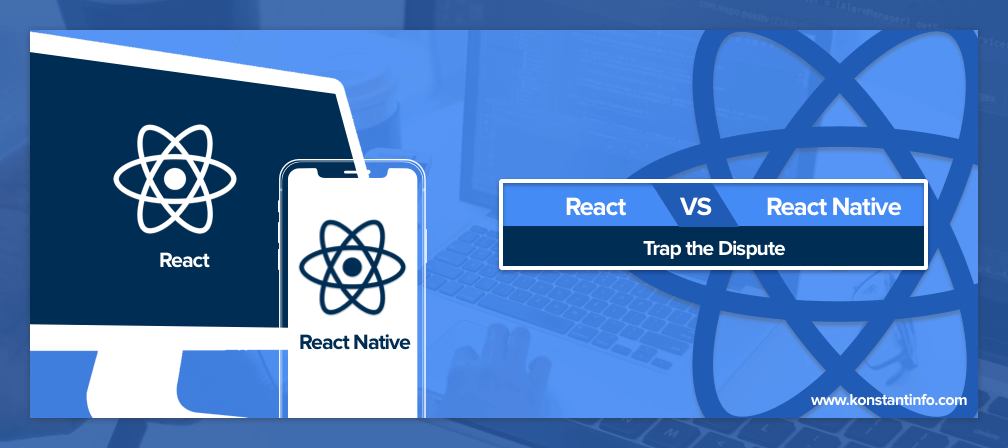
Table of Contents
Undoubtedly, Android or iOS app development is the kind of runaway smash hit that techies spend their careers dreaming about. When we unbox an Android device, we need to sign-up to some nine accounts with different vendors to get the experience iOS comes with. As witty as it sounds, iOS development has many useful resources and tools like iOS SDK integrated with Cocoa Touch UI framework, Swift Playgrounds (a learning platform for Swift developers), XCode (the official IDE for iOS development) and likewise that eases out working with OS. It can be true to quite some extent as Android is very, very fragmented, and is even becoming more fragmented by the day. Deliberately, Apple is striving for an integrated mode, so that end-user isn’t forced to be the systems integrator.
With the availability of varied development options like web apps, mobile apps (hybrid or native) or website development, you might face an epiphany! As we discuss two widely prevalent terms in development here – React (Library) and React Native (Hybrid Development Framework), we strive to clarify the hype that surrounds the web development and mobile app development thus covering the major features, advantages and disadvantages required to build cross-platform mobile applications.
JavaScript or JS is a high-level interpreted programming language that is characterized as dynamic, weekly typed, prototype-based and multi-paradigm. Then what is ReactJS? It is just another way to use React. The learning curve from JavaScript to React to React.JS and finally to React Native is smooth, especially in case one likes to learn new JavaScript frameworks.
React is preferred due to the virtual representation of HTML in memory, reusable and composable components, reactive updates of the state changes, etc. It is a useful and substantial solution pre-packed with various auxiliary tools.
React Native (RN) as a valuable technology for cross-platform app development, is a mobile framework for writing native apps in JavaScript. It was implemented as a solution to integrate seamlessly with the mobile OS. RN removes the gap between JavaScript and Objective C or JavaScript and Swift or JavaScript and Kotlin as it facilitates the creation of mobile apps across platforms. React Native can reduce the redundancy of code, thus saving a lot of time and effort. It has numerous open-source libraries of pre-built components which can help speed up the development process. React Native makes use of JavaScript and React frameworks to build Native-like applications. Overall, React Native draws inspiration from React, which is often treated as the elder brother.
A popular application of React Native includes Facebook, Instagram, Skype, Tesla, Walmart, Discord, Bloomberg, etc. If you already know anyone technology from JS, SQL, Java, C#, Python, PHP, C++, C, TypeScript, Ruby, Objective C or Swift – there are chances that developers will require to have less specialized knowledge before starting.
The view hierarchy is rendered using native components. Therefore, React Native apps provide the real native UX in most cases. And developers are not necessary to be experts in Kotlin/Java/Objective-C/Swift unless there is an aim to max out the framework’s potential and mix JS with the native code.
React Native has become an unquestioned leader in cross-platform app development due to its high efficiency. It is now being adopted by major companies like Instagram and overcome major hybrid frameworks like PhoneGap, Ionic, Adobe PhoneGap, Xamarin, Ionic, Tabaris.js, Appcelerator and Mobincube and many more.
Differences | React | React Native |
|---|---|---|
| Type | JS Library – A JavaScript library you use for constructing a high performing UI layer. | Framework – An entire platform allowing you to build native, cross-platform mobile apps. |
| Focus Area | Web | Mobile |
| Set-Up | One command to setup: (1) npx create-react-app my-app | Very fast; requires one command line to run the framework |
| Syntax | Both work on the same syntax: ECMAScript 6, JSX | |
| Development Model | Open-Source | |
| Navigation | React Router | React Native Tools |
| Animations | Can do animation with the CSS like normal web development – CSS Animations consisting of Styled components, React FLIP animation library, Animated, React Move | Have to use the animated API and Layout Animation which comes with React Native to animate different components of your application. |
| Component Styling | CSS Stylesheets, CSS Modules, Inline Styling, Styled component library | No CSS (Stylesheet API, Styled components library) |
| UI Rendering | DOM – React is the base abstraction of React DOM for the web platform | Platform-specific API’s – The syntax and workflow remain similar, but the components are different. |
| Virtual DOM/API’s | Browser code in React is rendered through Virtual DOM | Native APIs to render components on mobile. |
| UI Components | HTML for UI. | JSX components for UI. |
| Styling | CSS for Styling. | The stylesheet for Styling. |
| Applications | Ideal for building dynamic, high performing, responsive UI for your web interfaces | It is meant to give your mobile apps (across platforms) a truly native feel. |
In the end, the React Native app’s great look and feel depends on the abilities of the developers. The approach for mobile application development should be quick, responsive and reliable. It is important to track user behavior, demands, and expectations. To ensure this, it is important to remember the following points before building cross-platform mobile applications or native app development:
It is subsequently important to work with and mobile app and web application Development Company that specializes in platform-specific design and development. We are one of the early adopters of Android and iOS app development technologies and have seen it evolve over a while. So if you’re looking for boosting the brand, increasing the sales and reinforcing the client base, we’re here to help. Contact us now!



Manish Jain is the co-founder and Managing Director at Konstant Infosolutions. He is responsible for the overall operations of the company and has played a major role in bringing Konstant up from its humble beginnings and, with his immense energy and drive, transforming it into a globally trusted name in IT solutions.
Or send us an email at: [email protected]